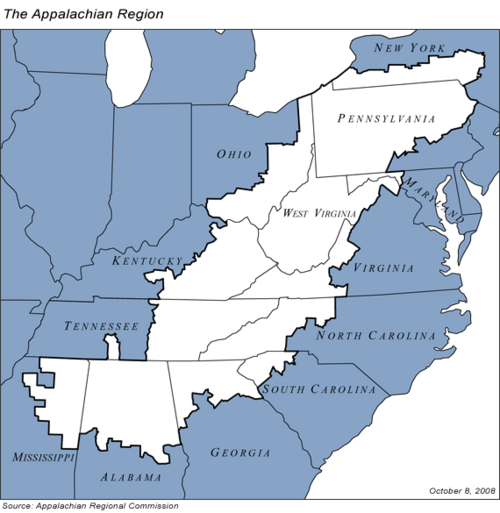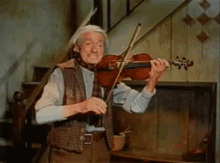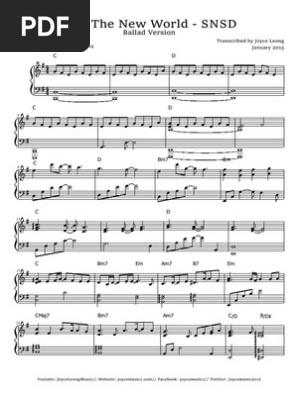 Chapter I: Go Tell it on the Mountain:
Chapter I: Go Tell it on the Mountain:
The Courtship of Country Music
“All of American music comes from the same place, it's just sort of where it ends up, and country music is one of the destinations.” - Ketch Secor, Old Crow Medicine Show
There are probably few if any music genres made up of so many different types of music as country music. Note, I don’t mean it has a lot of sub-genres - it does, like most other music genres - but nearly every other genre has come into being as the fusion of one, two or maybe three other types of broadly similar music. Country is, well, different. It would have to be, being, as I mentioned at the start, one of the oldest surviving forms of music. Among the many and varied traditions that went together to give a sort of birth to what we now know as country music were Appalachian music, Folk music, Blues, Old Time music, Cajun, Creole, Western Music, Celtic, Singing Cowboys, Corrido, Ranchera, French Folk music, Norteno, Folk music of the British Isles, Africa-American music and of course Gospel music. Not all of these genres of music are always present in country music, but each of them has and mostly continues to have an influence on the genre.
A question usually asked of any genre of music is where did it begin, where did it come from and who, for want of a better word, invented it? Who can we look back to and say that he, she or they is or are the father/mother, godfather/mother or grandfather/grandmother of the music? In some genres, this isn’t hard to ascertain. Most people will agree that Deep Purple and Black Sabbath are the godfathers of heavy metal, Genesis, ELP and Yes are among the progenitors of progressive rock, and The New York Dolls and The Sex Pistols invented punk rock. It’s harder to find a common source for jazz or classical, and the further back you go into the music’s origins the murkier those origins become, making it very difficult to assign the title of “first” or “creator” of the music style.
With country music it’s even harder, mostly due to the wide range of influences that came to bear from the 1920s on to coalesce into the country music we have today, broadly speaking. Rather than try to answer the rather impossible question then, the question without a true answer, it’s probably best to look back to the beginnings of the genre, by examining the many types of music that lent something of themselves to the formation of country music.
 Appalachian music
Appalachian music
For those, like me, who aren’t American and for whom the word means pretty much nothing, Appalachia is an area in the eastern United States, basically running from Upstate New York down to Alabama and Georgia, and it was to here that settlers from Britain, Northern Ireland and Scotland arrived in the seventeenth and eighteenth century, and like any immigrants they brought with them music to remind them of home, and maintain a link to the old country. Mostly these were ballads, sung acapella, more stories in song format than anything else, and obviously very heavily dependent on the lyrical matter, as they were listened to primarily for the story they told and not necessarily for the cadences - or indeed skill - of the singer. Ballads could be (and still are, to some extent, at least here) sung by people who had no idea of rhythm or melody and who could, to be completely fair to them, be described as being unable to carry a tune in a bucket. Rather like me. But that wasn't important. The story was the thing, and nobody cared if you could sing, for who can’t talk, and while there were of course people with highly musical voices who were a joy to hear and listen to, any old sod down the local crooning in a totally off-tune way about the fields back home would be listened to, and joined in with, probably by a crowd of people who would have similar difficulty transporting a tune in a metal canister.
It didn’t matter.

But then there was the music, and that was a separate thing. Reels and jigs were made to be danced to, and the instrument folk usually danced to when these were played was the fiddle. Fiddles were quick, lively and actually took skill to play, so a fiddler at say a barn dance or other gathering was always welcome, and possibly paid well for his time, possibly with liquid refreshment or tobacco.
Another thing immigrants bring with them generally is their worship, their faith, their religion, and a form of singing called “lining out” (which sounds like something a rugby team would do, and also brings to mind the later horrors of line dancing!) involved one person singing a line from a psalm or hymn, and the rest, the congregation, responding in chorus. Sounds a lot like the chants of the monks to me, popular (well, about the only real music available) back in the times before the Renaissance.

The New World ballad became popular, both as a music form and as a way to disseminate news of events, which would be written up in song and then distributed and sung, perhaps a more sophisticated and inclusive version of the old town crier in medieval Europe. Given how endemic to country music it became, it might surprise you to learn (it did me anyway) that it was African-American slaves who first brought the banjo to the Appalachians, their playing influencing some of the greats of the era. This also led to the beginning of blues music, which rapidly spread throughout America but always was, and more or less always has been, seen as “black music”, so much so that when white men attempted it - often very successfully - their music was usually labelled as “white blues”, to distinguish it from the original (and seen as better) and also, perhaps, to note that this was a form of what might later qualify as cultural appropriation. Blues was supposed to be the music of the oppressed black community, slaves and then even as free men, still second-class citizens. It’s probably a truism that nobody can play the blues like a black man.
As string bands began to form, instruments such as the guitar, mandolin, spoons, washboard and others began to appear in the Appalachians, as well as the fretted dulcimer and the autoharp. A string band was and is a music ensemble, made up exclusively of stringed instruments and whose prevalence would eventually give way to the very popular sub-genre of country music called bluegrass. Most of the instruments above need little or no explanation, but some do. So here they are.
Spoons
Sounds simple enough, doesn’t it? But to play the spoons takes energy, skill and dexterity. You’ll probably not be surprised to learn that they’re a percussion instrument, or even accompaniment - I don’t recall ever seeing
Concerto in A Minor for Spoons or
Rhapsody on a Theme of Spoons. They’re not what you’d call musical. You can play them solo but they’re not going to sound like much more than they are, which is, well, two spoons banging against each other, but when used to accompany say a fiddle or accordion or harmonica, or multiple instruments, they can sound very impressive. I would imagine you also need something of a high pain threshold, as the spoons are typically hit against the leg, arm, hand or other part of the body, and while they’re obviously not hit hard, they are hit repeatedly, so that I expect it must hurt a little after a while. Contrary to public belief though, this is not from where we get the expression “he’s a real spoon, isn’t he?”
 Autoharp
Autoharp
Autoharps come from the zither family of stringed instruments, and are basically a portable harp with bars that mute all strings except those needed to make that chord. Originally conceived to be played lying flat - rather like the later steel guitar - one hand would pluck the strings while the other worked the chord buttons.
 Fretted Dulcimer
Fretted Dulcimer
Unrelated to the hammered dulcimer (but then, you knew that, didn’t you?), this one does not go out and get drunk at all. It has acquired various nicknames, some of them quite charming, such as the Kentucky dulcimer (are you
sure it doesn’t get drunk?), the harmony box, the hog fiddle and the hilariously prosaic the music box. Again, it is or was intended to be played flat, either on the lap or on a table, and the strings plucked, which again - and this may be way off but it sounds right to me - makes me think of this as some distant ancestor of one of country’s most popular and enduring instruments, the lap steel guitar.
 Washboard
Washboard
Yeah, you’ve probably seen this in either some old cowboy movie, cartoon or episode of the Grand Ole Opry. Originally developed as, well, a board for washing clothes, it became defunct after mechanical washing machines became available and is another thing we have to thank our black brothers for, as it was again slaves who brought the musical version of the washboard to America, through a style of African dance called “hamboning” (and no doubt thought savage and pagan by us civilised folks) and can be played in many ways and styles but is generally a rhythm or percussion instrument. It became popular through the formation of jug bands, which emerged in the early 1920s. Jug bands are bands which employ washboards, spoons and, um, jugs to make their music.
 Washtub Bass
Washtub Bass
It’s exactly what it sounds like. A washing tub, used as a resonator, is attached to a long, usually single-stringed instrument. This, too, originates in Africa, in instruments such as the ground bow and the
ang-bindi. It’s another instrument that often found its way into jug bands, and was also called the gut-bucket bass or the gas-tank bass.